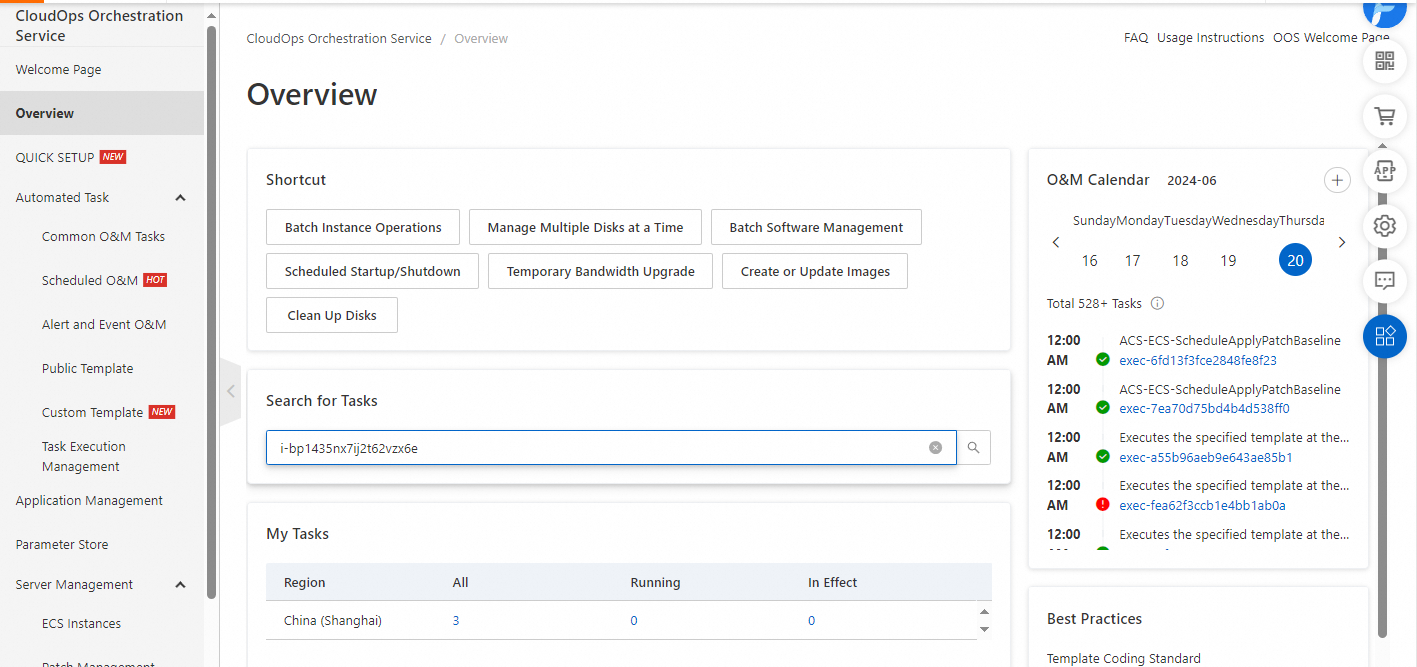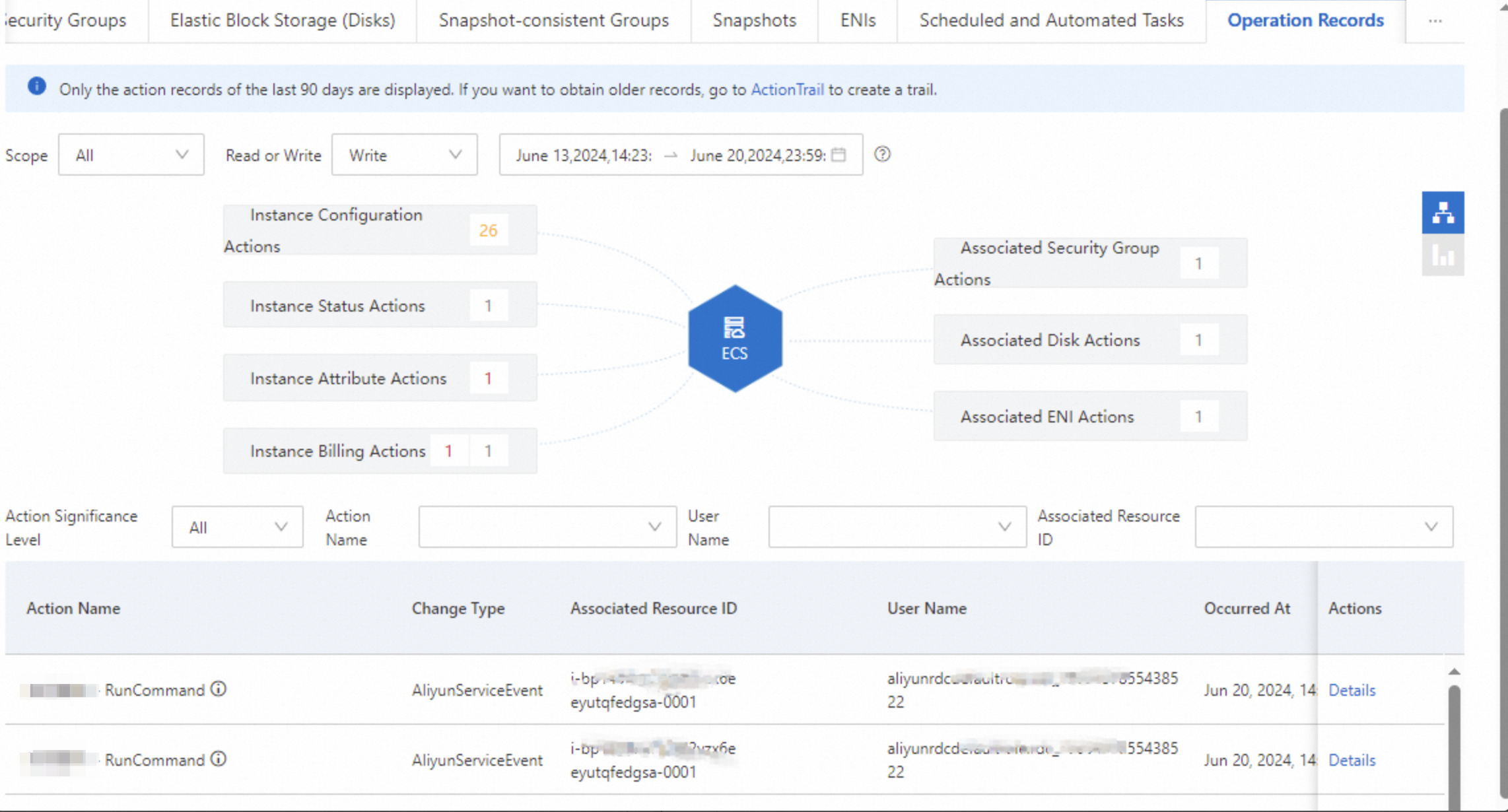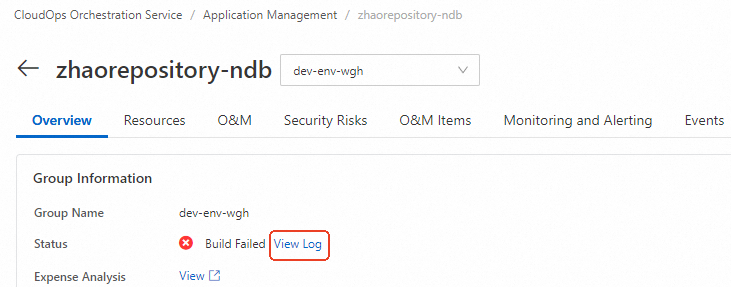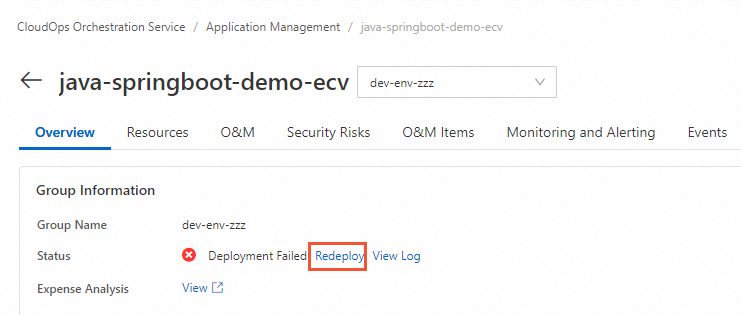This topic provides answers to frequently asked questions (FAQ) about using CloudOps Orchestration Service (OOS).
What do I do if the "User has no permission to do the action: (ListTemplates)" error message appears when I use OOS as a RAM user?
Possible cause: The RAM user does not have the permissions to call the operation.
Solution: Log on to the RAM console with an Alibaba Cloud account or an administrator account. Authorize the RAM user to call the specified API action or all API actions of OOS. For example, configure "Action": "oos:*" to authorize the RAM user to call all API actions of OOS. For more information, see Access control.
{
"Statement": [
{
"Effect": "Allow",
"Action": "oos:*",
"Resource": "*"
}
],
"Version": "1"
}
What do I do if the "User has no permission to do the action: (PassRole)" error message appears when I use OOS as a RAM user?
Possible cause: The RAM user does not have the PassRole permission to call the CloudOps Orchestration Service operation.
Solution: Log on to the RAM console with an Alibaba Cloud account or an administrator account. Grant the PassRole permission to the RAM user. For more information, see Access control.
{
"Version": "1",
"Statement": [
{
"Effect": "Allow",
"Action": "ram:PassRole",
"Resource": "*"
}
]
}
Why is the following error returned when I use a template: Assumes role failed. Code: EntityNotExist.Role, msg: The role not exists: acs:ram::111111:role/OOSServiceRole?
Possible cause: You have not created a default RAM role for your OOS service to access your Alibaba Cloud resources.
Solution: Log on to the RAM console with an Alibaba Cloud account or an administrator account. Create the default RAM role OOSServiceRole for your OOS service. For more information, see Grant RAM permissions to OOS.
Why is the following error returned when I execute a template: Assumes role failed. Code: NoPermission, msg: You are not authorized to do this action. You should be authorized by RAM?
Possible cause: You have not attached the required trust policy to the RAM role OOSServiceRole for your OOS service.
Solution: Log on to the RAM console by using an Alibaba Cloud account or an administrator account and add the OOSServiceRole RAM role. For more information, see Set RAM permissions for OOS.
Log on to the RAM console and search OOSServiceName.

Click Trust Policy.
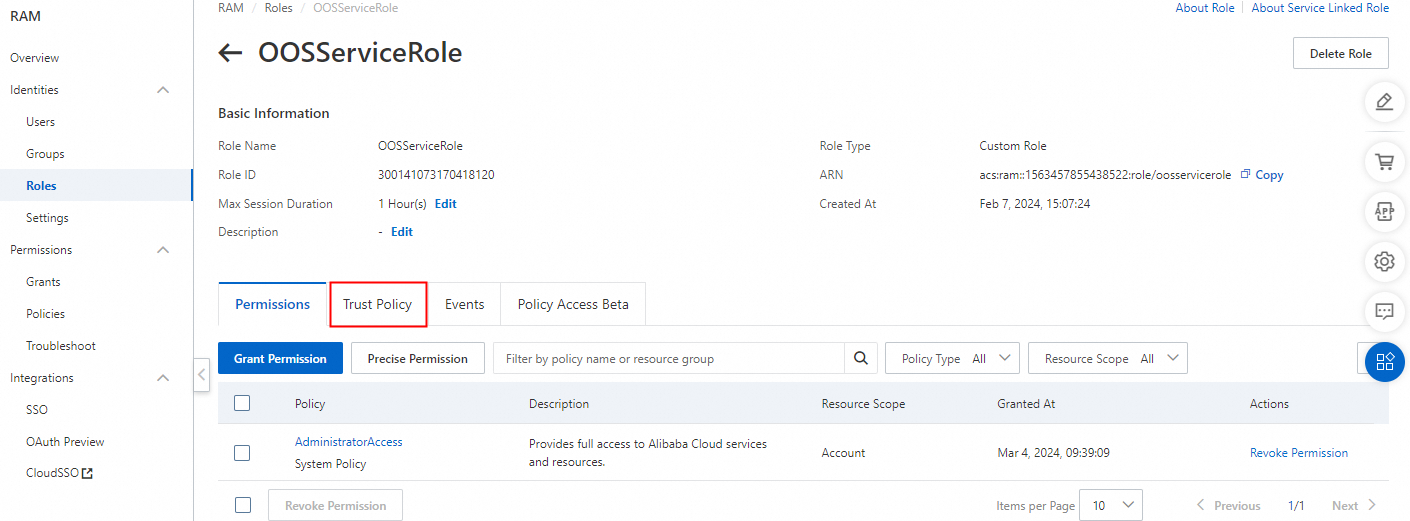
Modify the policy.
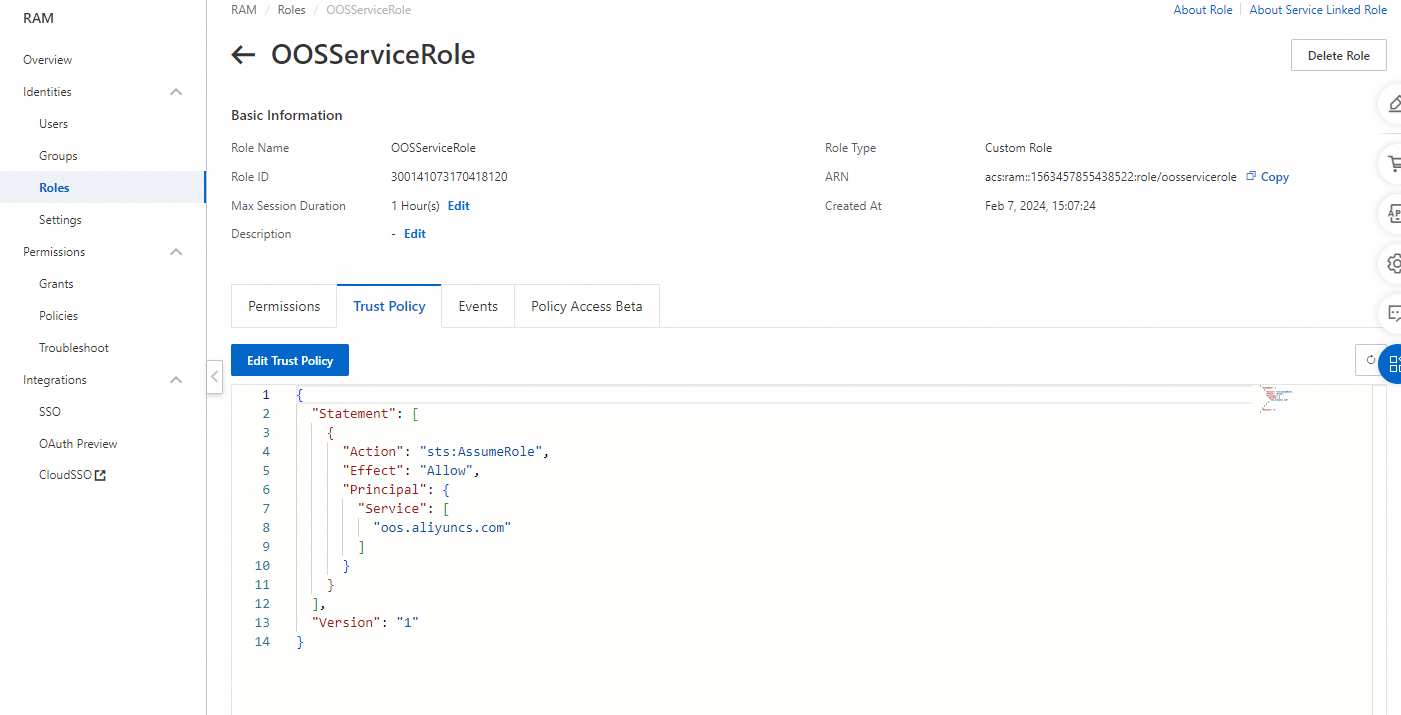
Use the following content for the policy:
{
"Statement": [
{
"Action": "sts:AssumeRole",
"Effect": "Allow",
"Principal": {
"Service": [
"oos.aliyuncs.com"
]
}
}
],
"Version": "1"
}
Why is the following error returned when I use a template: Code: Forbidden.RAM, Message: User not authorized to operate on the specified resource, or this API doesn't support RAM?
Why is the following error returned when I perform a temporary bandwidth upgrade: code: InvalidAccountStatus.NotEnoughBalance message: Your account does not have enough balance?
Why is the following error returned when I perform a temporary bandwidth upgrade: code: InvalidBandwidth.ValueNotSupported message: Instance upgrade bandwidth of temporary not allow less then existed?
What do I do if the "code: OperationDenied.UnpaidOrder message: The specified instance has unpaid order" error message appears when I perform a temporary bandwidth upgrade?
What do I do if the "runCommand loop task fail because failures exceeded MaxErrors -> runCommand execution failed, checkInvocationResult Invocation.InvocationResults.InvocationResult[].ExitCode expect in [0] but is 1" error message appears when I run a command?
Possible cause: The exit code of the Cloud Assistant command is not 0.
Solution: Troubleshoot the error by viewing the output and logs of the child execution. For more information, see View the details of an execution.
What do I do if I create an execution but I cannot find it?
What do I do if I failed to build and deploy an application from the Git code repository?
 Elastic Compute Service (ECS)
Elastic Compute Service (ECS)
 Container Compute Service (ACS)
Container Compute Service (ACS)







